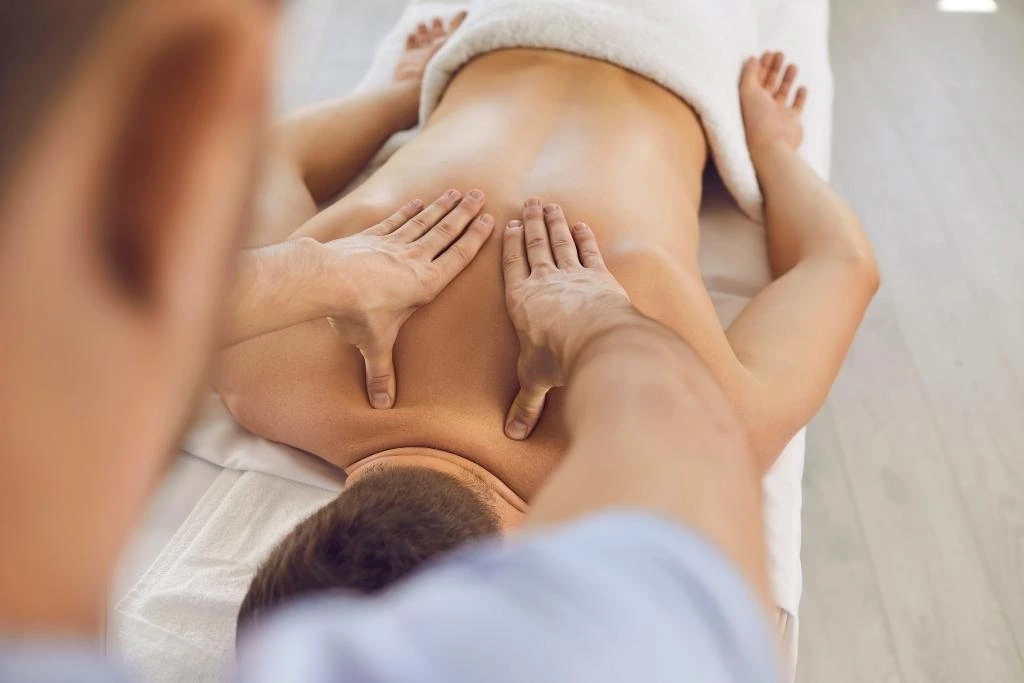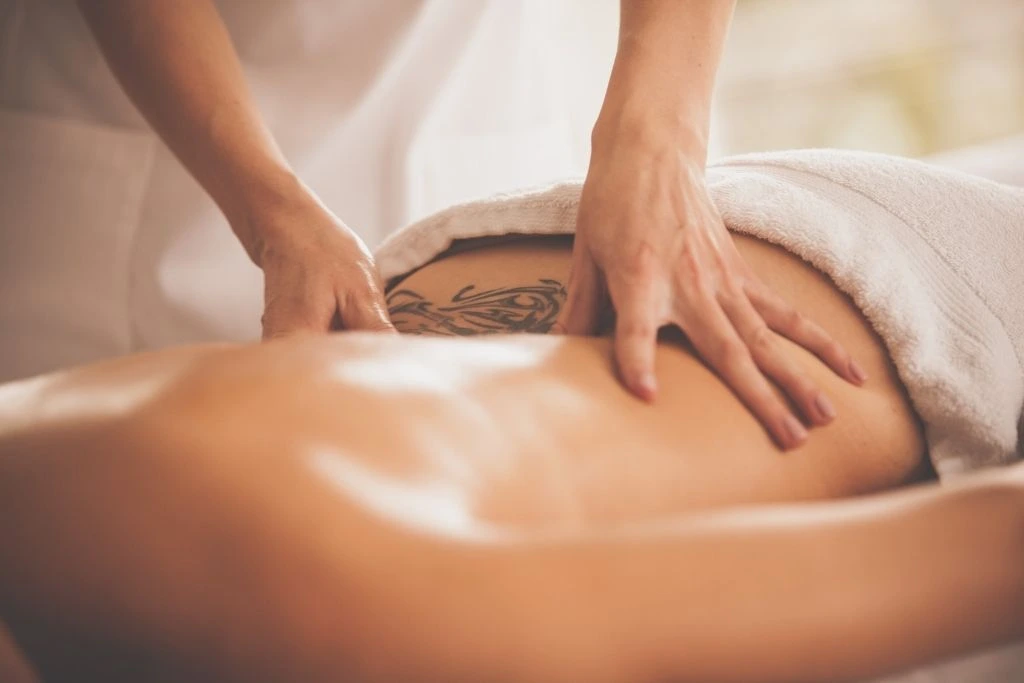Massage therapy isn’t just a luxury or a once-a-year birthday treat.
It’s one of the most powerful natural tools you have to support your body, manage stress, and stay healthy without medication.
Each massage session works to:
- Increase blood circulation
- Relieve muscle tension
- Calm your nervous system.
- Support your immune function.
But here’s the thing: the effects are cumulative. One massage can help you feel better for a day or two.
Regular sessions? That’s what creates lasting change.
What Determines How Often You Should Get a Massage for Optimal Health?
This is not a one-size-fits-all question.
Individual elements; body, activity level, and aspirations—combine to create a message timetable unique to you.
The following are the key considerations:
1. Your Stress Levels
Your body holds onto stress: tense shoulders, gritted teeth, and rapid thoughts.
If you feel overwhelmed with your job, relationships, or life in general, then it is very likely the body needs more assistance unwinding.
- High stress (daily tension, anxiety): Weekly or biweekly massages
- Moderate stress (occasional tension): Every 2–3 weeks
- Low stress (minimal pressure): Monthly for maintenance
You see, getting a massage lowers cortisol (your stress hormone) and increases serotonin.
As a result, it aids in making your relaxation speedier and easier and granting you a little bit more emotional and physical space.
2. Pain, Injury, or Chronic Conditions
Are you afflicted with back pain, migraines, arthritis, or sports injuries?
You will have more specific massage work, more often.
- Acute pain flare-ups: 2–3 times a week initially
- Injury recovery: Once or twice a week during early healing
- Chronic pain management: Weekly to biweekly
As your pain decreases, your therapist may recommend spacing out sessions.
Massage is excellent for conditions like
- Fibromyalgia
- TMJ (jaw tension)
- Sciatica
- Carpal tunnel syndrome
People with chronic pain or certain health concerns, for example, may need to have regular and frequent massages to help facilitate healing and relaxation of the muscles.
3. Your Activity Level
Are you a desk worker? Or maybe you go to the gym five times a week?
- Lack of exercise: It happens that massage can help with posture & stiff appearance.
- Active or athletic: If you are of an active nature or a longtime athlete, massage helps your muscles recover faster, allows you to perform better, and decreases injury.
Athletes and fitness fans often schedule massages.
- Before an event: To warm up muscles
- After a workout: To flush toxins and reduce soreness
- Regularly: For muscle maintenance

4. Pregnancy or Postpartum Health
Massage during and after pregnancy relieves:
- Swelling
- Back pain
- Hip discomfort
- Fatigue
It also helps with postpartum recovery and hormone balance.
- First trimester: Monthly or as recommended
- Second and third trimester: Biweekly or weekly
- Postpartum: Weekly for the first 6 weeks
Always consult your OB-GYN before beginning prenatal massage.
5. Your Budget and Time
Let’s be real, massage therapy costs money and takes time.
If weekly sessions don’t fit your schedule or wallet, monthly is still incredibly helpful.
You can also extend the effects between sessions with:
- Home massage tools
- Foam rollers
- Stretching routines
Massage Frequency by Health Goal (Table)
| Health Goal | Recommended Frequency |
| Stress reduction | Weekly to monthly |
| Chronic pain relief | 1–2 times per week |
| Injury recovery | 2–3 times per week, tapering later |
| Athletic recovery | Weekly or as needed |
| Pregnancy/postpartum care | Every 1–2 weeks |
| General wellness | Monthly |
If you’re unsure where to start, schedule one massage per month. Adjust based on how your body responds, and listen to your body.
Can You Get Massaged Too Often?
It’s rare, but yes, overdoing it can backfire.
Massage stimulates circulation and detox. Too much, too fast can make you feel
- Sore
- Fatigued
- Dizzy or lightheaded
Warning signs you’re overdoing it:
- Pain that lasts more than 48 hours
- Increased inflammation
- Feeling drained instead of relaxed
To stay safe:
- Space out deep tissue sessions.
- Start slow if you’re new to massage.
- Drink lots of water after each session.
Remember, massage should help you feel better, not worse.

Ways to Maximize Benefits Between Sessions
Can’t go weekly? No problem. You can stretch the results.
Try These Simple Habits:
- Daily stretching for neck, shoulders, and back
- Use a tennis ball or foam roller for sore spots.
- Stay hydrated to help muscles recover.
- Take Epsom salt baths for relaxation and muscle relief.
- Practice deep breathing or meditation.
- Invest in a massage gun or pillow for quick relief.
The more you care for your body daily, the longer each massage lasts.
What Type of Massage Should You Choose?
Different massage styles offer different benefits. Choose based on your needs:
| Massage Type | Best For |
| Swedish Massage | Relaxation, stress relief |
| Deep Tissue Massage | Chronic pain, muscle stiffness |
| Sports Massage | Active recovery, injury prevention |
| Trigger Point Therapy | Muscle knots, headaches |
| Myofascial Release | Posture, chronic tension |
| Prenatal Massage | Pregnancy comfort and wellness |
Talk to your therapist about your lifestyle and health goals. They’ll help you pick the right approach and frequency.
How Massage Supports Long-Term Health
Over time, massage improves more than sore muscles.
Proven Long-Term Benefits:
- Reduces anxiety and depression
- Lowers heart rate and blood pressure
- Improves sleep quality
- Strengthens immunity
- Boosts mental clarity
Your body thrives on consistency. Just like exercise or healthy eating, regular massage builds resilience from the inside out.
1. How Often Should You Get Deep Tissue Massage for Pain Management?
A deep tissue massage is great for chronic pain; it is also designed to reach the deeper layers of muscle and connective tissue.
If you are seeing me for chronic pain, you will likely need bi-weekly or weekly sessions. Your massage therapist will tailor the frequency to suit your needs.
2. What Are the Benefits of Massage Therapy for Stress Relief?
Massage therapy is beneficial for both reducing stress and overall well-being.
It helps by:
- Reducing muscle tension
- Boosting serotonin
- Calming the nervous system
A monthly or biweekly massage can be great for stress relief and relaxation.
3. Can a monthly massage help with general wellness?
Yes, a monthly massage supports general wellness.
It helps.
- Maintain muscle health
- Improve circulation
- Reduce stress
A monthly massage is perfect for maintaining overall health and optimal results.
4. How Can Massage Therapy Help With Chronic Pain Management?
Massage therapy is great for chronic pain management.
It helps.
- Relieve muscle tension
- Reduce scar tissue
- Improve range of motion
For chronic pain, biweekly or weekly massages work well. A massage therapist will adjust the sessions to your individual needs.
5. How Often Should You Actually Be Getting a Massage for Performance and Recovery?
For athletes, getting a massage every week or biweekly aids in muscle recovery.
It helps.
- Prevent injury
- Reduce soreness
- Improve range of motion
A licensed massage therapist can guide you on the right frequency based on your physical activity and needs.
Final Thoughts: What’s the Right Schedule for You?
There is no right answer here, only what is right, which is good for you.
Start with once a month. See how you feel. If your gut is still asking for it, try every two weeks.
Massage is not a luxury; it is a necessity.
It helps you keep your body moving, your mind still, and your health in check. You have the right to have that kind of treatment.

